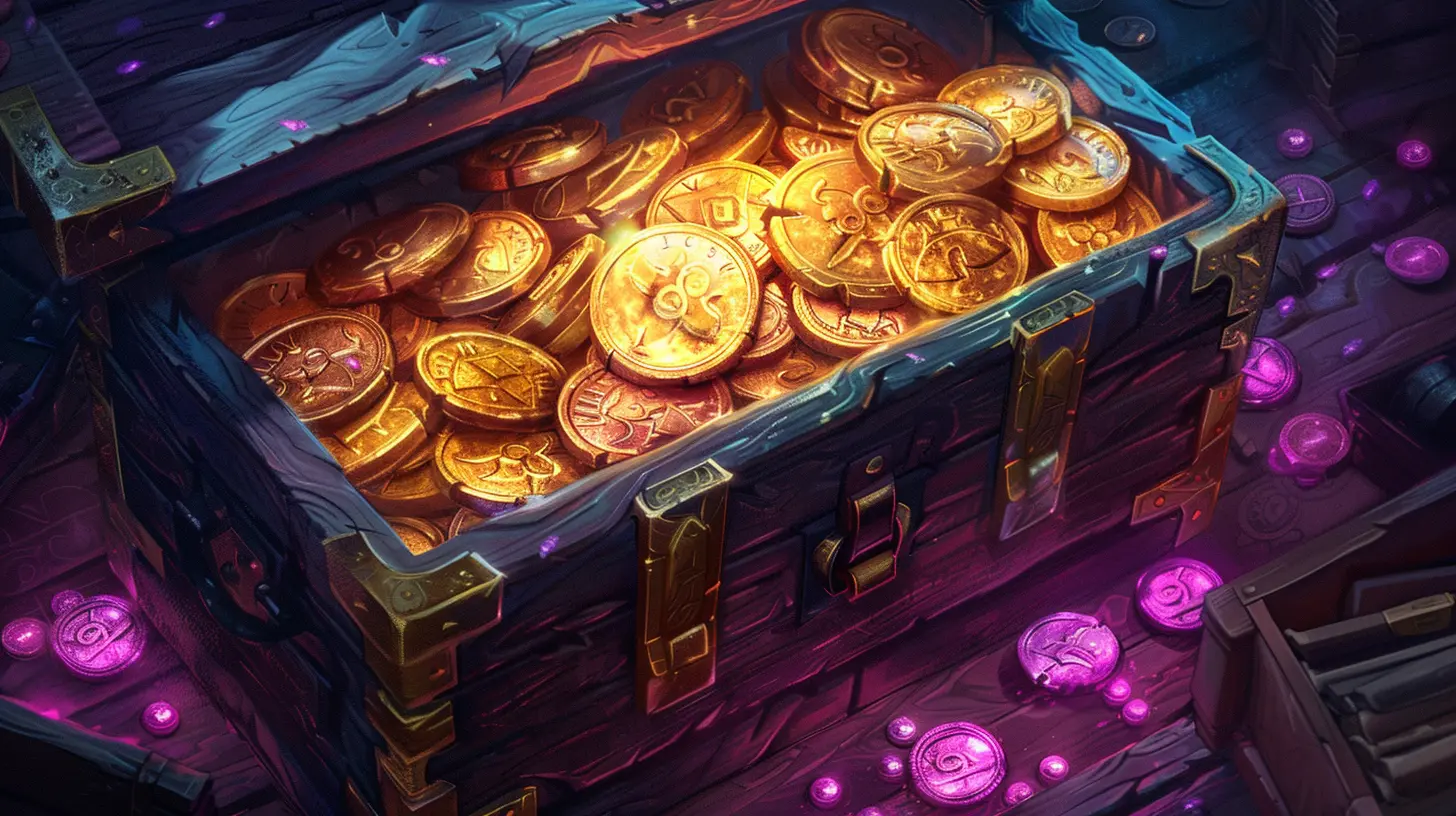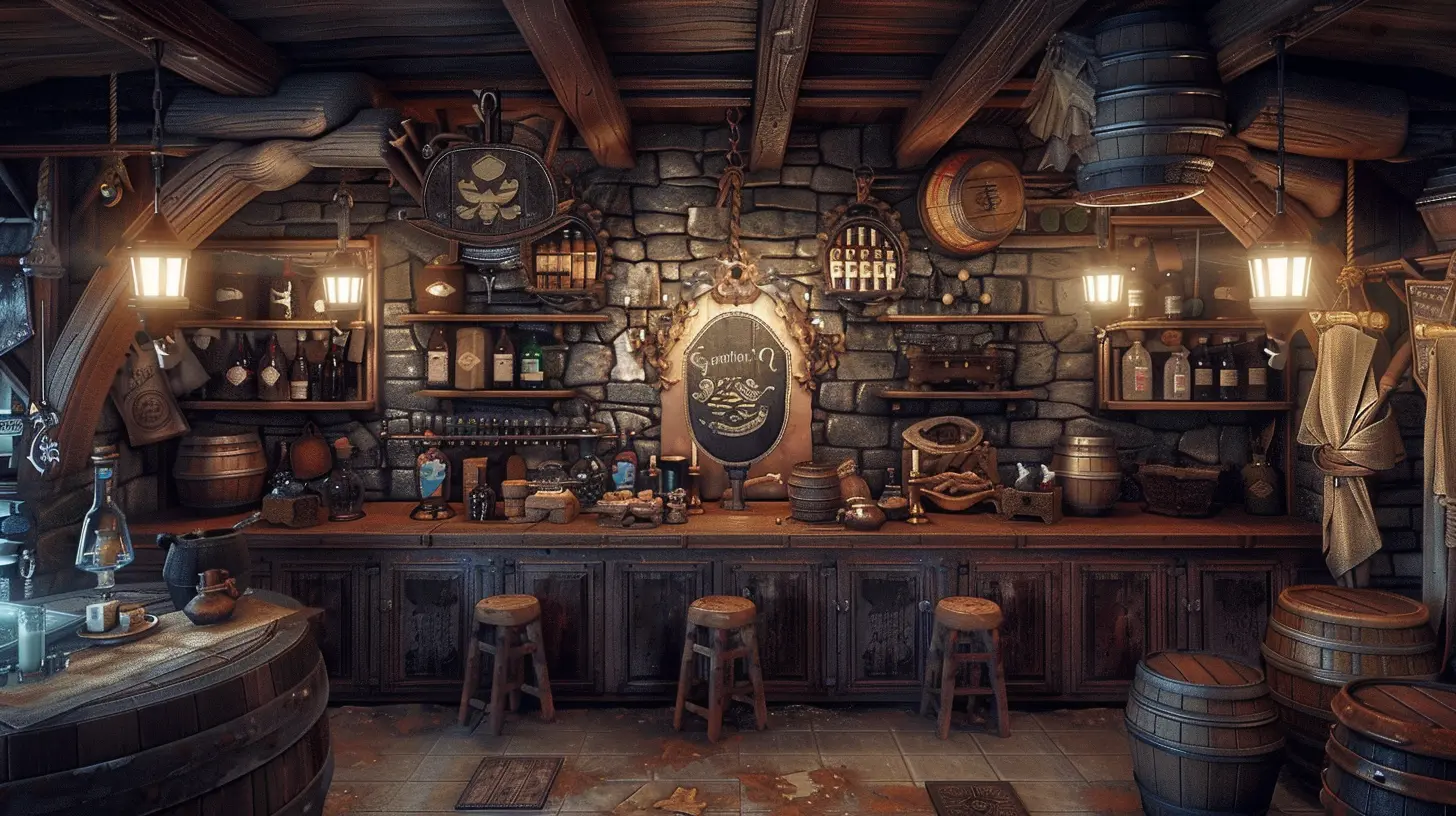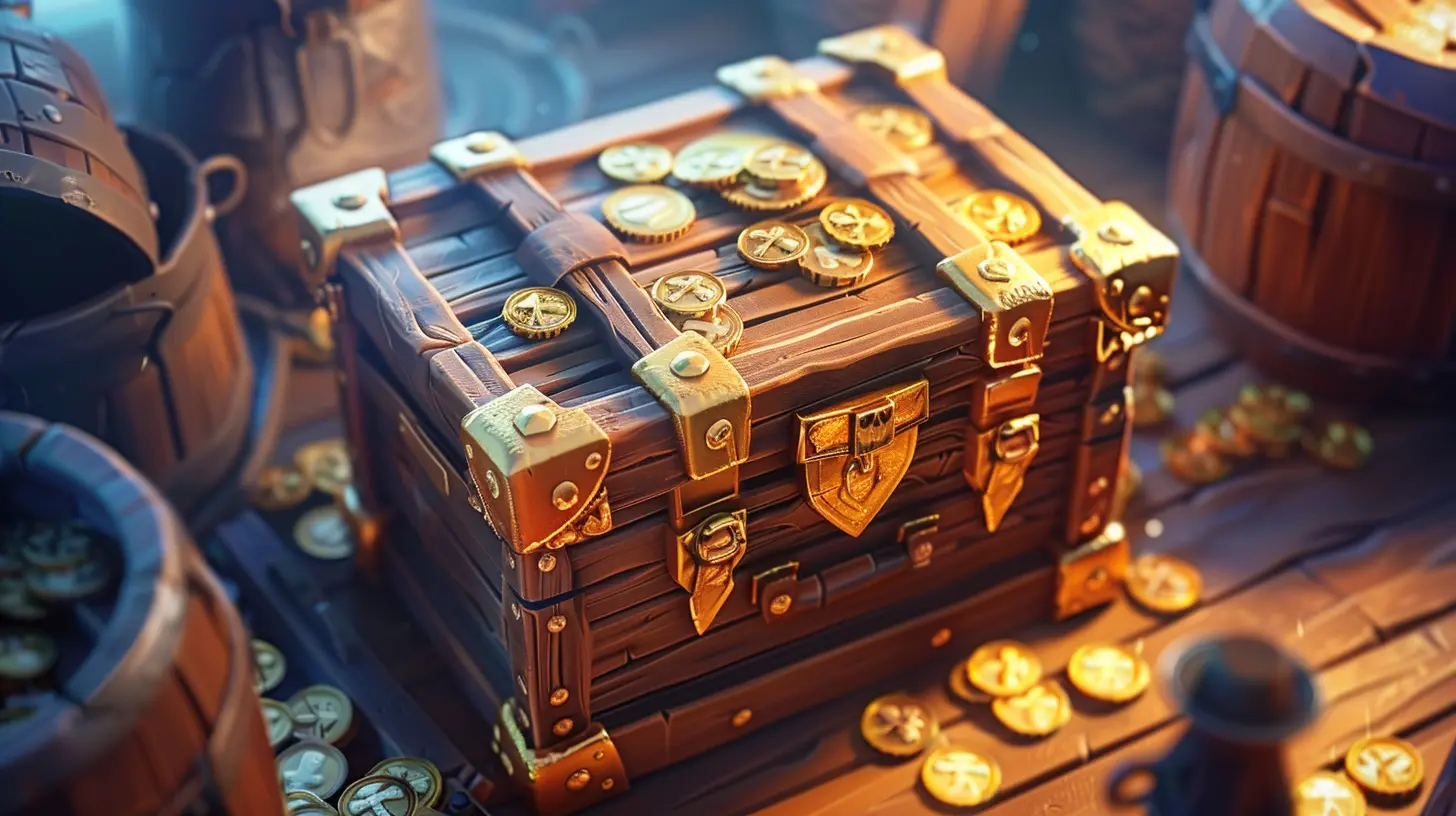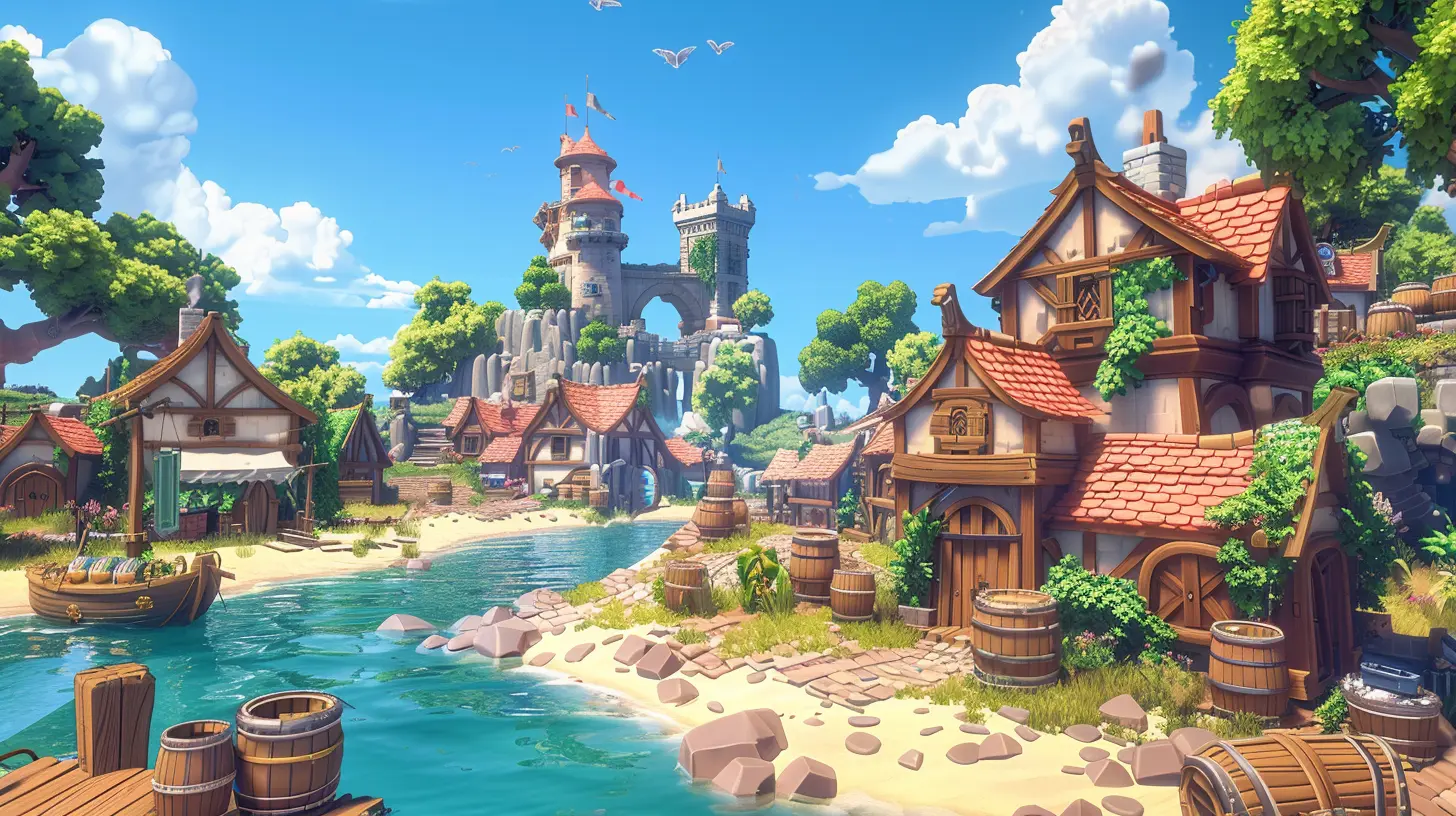How Crafting Can Drive In-Game Economy Inflation
24 August 2025
Welcome to the wacky world of in-game economies, where crafting a flaming sword of epic destruction can somehow cause bread to cost 50 gold—go figure. If you've ever wondered how crafting, that wholesome activity where you turn digital rocks and sticks into world-ending weapons, can actually set your server’s economy on fire, buckle up, my friend. We're diving headfirst into the pixelated rabbit hole.

The Magical Alchemy of Crafting Systems
Let’s start with the basics. Crafting in games is like cooking, but instead of soufflés, you're baking swords, armor, potions, and occasionally… bombs. You gather resources—ores, herbs, monster teeth, random glowing crystals—and combine them using recipes. Voila! New item!But here's the catch: crafting isn't just for the fun of it (though turning wolf pelts into wizard robes is oddly satisfying). It's a cornerstone of many games' economies. Think of it as the economic engine revving behind the scenes, churning out swords and potions like it's Black Friday.
And sometimes? That engine overheats and explodes.

Inflation in Games? Oh Yes, It’s a Thing.
Just like in the real world, in-game economies aren’t immune to inflation. You're probably thinking, “Wait, this is a game! Why should I care if my 100 gold doesn’t go as far as it used to?”Well… if you’ve ever stopped to deeply consider whether you'd rather buy a potion or save for a mount because the prices have skyrocketed, congrats—you’ve felt the sting of pixel-based inflation.
Inflation happens when there's too much currency in the game and not enough valuable stuff to spend it on. Prices go up. That basic sword you used to get for 10 gold now costs 100. And crafting? Crafting is one of the biggest culprits behind this digital economic mess.
Let me explain.

Resource Generation: It’s Raining Materials!
Crafting systems often rely on harvested materials. But unlike the real world, where resources are finite (and trees take a few years to grow back), in games... they respawn. Endlessly. Forever. Which means players can farm the same iron node over and over and over until they're basically running a one-person mega-mine.With more materials flooding the economy, crafted items become more common. And since almost everyone has access to crafting skills, the once rare and valuable Flaming Sword of Doom™ becomes standard issue. Supply goes up. Demand doesn’t. Prices drop.
BUT—(yeah, it gets worse)—people still have tons of money from selling crafts, and they need to spend it on something. So they turn to rare resources, limited-time items, or auction house bling. Demand there skyrockets. Prices go up. Inflation hits.
It’s like everyone suddenly has money but nothing cool to buy except that super-rare unicorn mount that now costs a house and three kidneys.

Crafting for Profit: The Gold-Maker’s Dream Becomes a Nightmare
Crafting isn’t just about making stuff—it’s about making money. Many players don’t want to slay dragons or save kingdoms. They want to run a virtual Etsy shop and retire early in a beach resort housing zone.Here's where the real chaos begins. Hardcore crafters game the system. They analyze resource spawn timers, optimize recipes, mass-produce valuable goods, and manipulate the market. And as they rake in gold, the entire economy feels the ripple.
Prices on essentials shoot up not because of scarcity, but because the crafter overlords can afford to outbid everyone. Casual players? They’re left buying potions on payment plans.
Game Devs vs. Inflation: The Eternal Struggle
Developers aren't clueless. They know crafting can spiral out of control like a toddler in a candy store. So they put in caps, nerfs, sinkholes (no, not literal ones... although that would be hilarious)—designed to drain currency and balance the economy.Ever wonder why item repairs cost SO MUCH or why housing costs are through the pixel-roof? Yep. Economic sinks. They're there to remove gold from the system and slow inflation.
But crafters are clever. They find loopholes, squeeze every copper out of the system, and before you know it—BOOM! Back to inflation city.
The Snowball Effect: Crafting Leads to More Crafting
Here's another twist. As crafting becomes more profitable, more players jump aboard the crafting train. After all, why grind mobs for gold when you can make 10x that crafting enchanted boots?More crafters mean more items flood the market. Low-tier goods become worthless. Higher-tier items become the new norm. And the economy spirals further.
Even worse? It creates a weird kind of pressure. Players feel like they HAVE to craft to keep up. Suddenly, everyone’s a blacksmith, and nobody’s out there fighting goblins anymore.
Botters and Gold Farmers Say “Thank You, Crafting!”
Crafting systems are catnip for bots. Automated accounts mine resources, craft items, sell them, rinse, repeat. These bots flood markets with underpriced goods, crash economies, and often make life miserable for real players.Ironically, players then hoard gold, anticipating future inflation, which only makes things… wait for it… worse.
At this point, it’s a digital version of the 1920s German hyperinflation where people carried cash in wheelbarrows to buy bread. Except here, it’s orcs, not bread.
P2W and Cash Shops Throw Gasoline on the Fire
Let’s throw in one final spicy ingredient: real-money transactions. Some games allow buying crafting materials or currency boosts. Others straight-up sell high-end gear.These premium options often shortcut the crafting grind, flood the economy with goods and currency, and make inflation even worse. Why grind for hours when you can pay $5 and ruin the market for everyone?
It’s like putting a jet engine on your crafting system. It’s fast, it’s loud, and eventually, things are going to explode.
So… Is Crafting the Villain?
Not exactly. Crafting systems, when balanced well, are fun, rewarding, and give players creative control over their progression.The real issue? It's when crafting is too easy, too profitable, or poorly balanced with the rest of the game’s economy. It becomes a gold-printing machine that breaks the bank—literally.
Crafting is like that friend who’s awesome at parties but always drinks too much and starts singing karaoke at midnight. They mean well. But someone’s gotta watch them.
What Can Be Done? (You Know, Aside from Crying)
Developers can take steps to tame the inflation beast caused by crafting:- Crafting Cooldowns: Limit how much players can craft in a given time.
- Durability Decay: Make crafted gear wear out, generating continuous demand.
- Binding Items: Prevent crafted gear from being sold freely.
- Randomization: Add quality levels or chance-based perks to slow mass crafting.
- Higher Sink Costs: Charging heavy taxes or fees for crafting high-value items.
Also, dynamic economies—where supply and demand actually matter—go a long way toward maintaining balance. It's tough, but not impossible.
In Conclusion: Crafting, You Beautiful, Dangerous Thing
Crafting is one of the most beloved systems in gaming. It’s creative. It’s strategic. It lets you turn spider legs into stylish hats. But like any powerful mechanic, if left unchecked, it can mess things up in a big way—especially the game’s economy.Inflation doesn’t come out of nowhere. It’s crafted. Bit by bit. Item by item. Potion by potion.
So the next time you're smelting ore into armor and selling it for a tidy profit—remember... you might just be the reason that sandwich in town costs 500 gold.
And hey, that's not necessarily bad—just make sure when the economy collapses, you've already bought that unicorn mount.
all images in this post were generated using AI tools
Category:
Item CraftingAuthor:

Tina Fisher
Discussion
rate this article
1 comments
Edward McKeever
Intriguing perspective! I'm curious how different crafting systems impact supply and demand in various games. Do certain materials inflate value more than others, and how does player behavior play into this dynamic?
August 27, 2025 at 3:23 AM

Tina Fisher
Thank you! Different crafting systems can significantly influence supply and demand. Rare materials often inflate value due to limited availability, while player behavior, such as market speculation and crafting trends, can further amplify these effects, leading to inflation in the in-game economy.

